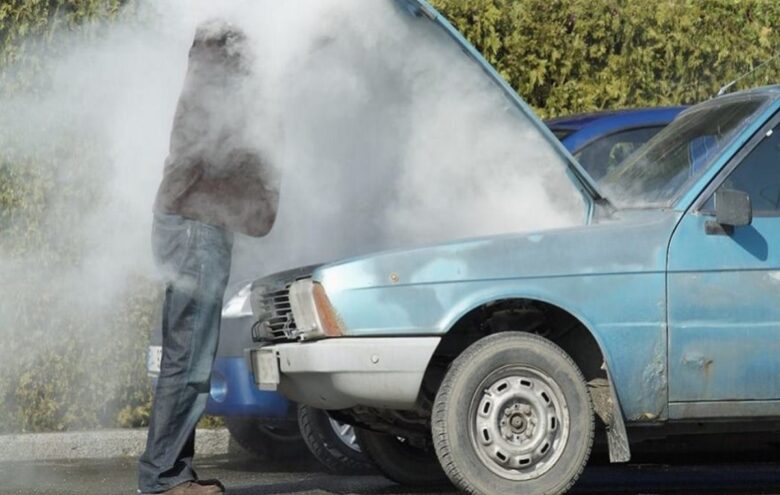Buying a used car can be a smart and cost-effective decision, but it also comes with its own set of challenges. One of the most critical aspects of buying a used car is ensuring that there are no hidden problems that could lead to expensive repairs later on. Knowing what common problems to look for in a used car can help you make a more informed decision and avoid potential pitfalls.
1. Engine Problems
The engine is the heart of any vehicle, and problems can be expensive and troublesome. When inspecting a used car, pay close attention to the performance of the engine. Listen for unusual noises, such as knocking or clicking, which can indicate internal damage. Check for blue or white smoke coming from the exhaust pipe, as this could indicate burning fuel or a coolant leak. Make sure the engine starts and idles smoothly. Check the engine oil and transmission fluid; if they are dirty or have an unusual color, this could indicate a problem. Additionally, check the vehicle’s maintenance records to make sure the engine has been serviced regularly and any necessary repairs have been performed.
2. Transmission Problems
Transmission problems can be complex and expensive to fix. When test-driving a used car, pay attention to how smoothly the transmission shifts. If you have difficult or irregular shifting, slipping, or hard shifting, these could be signs of transmission problems. An automatic transmission should shift seamlessly between gears, while a manual transmission should shift smoothly and without wear. Check the transmission fluid level and condition; it should be pink or red and clear, not brown or burnt. If the vehicle has a manual transmission, make sure the clutch feels firm and engages smoothly.
3. Suspension and Steering Problems
A vehicle’s suspension system plays a crucial role in providing a smooth ride and ensuring good handling. When test-driving the suspension, pay attention to any unusual noises or vibrations. A rattling or clattering noise over bumps could indicate worn shock absorbers or struts. Pay attention to how the car drives; if it pulls to one side or the steering feels loose or unresponsive, there could be a problem with the alignment or steering components. Check the suspension components for obvious signs of wear or damage, such as leaking shock absorbers or broken springs.
4. Brake Problems
Brakes are essential to safe driving, so it is crucial to make sure they are in good condition. Pay attention to squeaking or grinding noises when you brake; these noises could indicate worn brake pads or damaged brake rotors. Pay attention to how the brakes feel; if they are spongy or take longer to stop, there could be a problem with the brake system, such as air in the brake lines or worn brake components. Check the brake fluid level and condition; it should be clean and at the correct level. If your vehicle is equipped with ABS (Anti-lock Braking System), check that it is working properly and that the warning light on the dashboard is not illuminated.
5. Electrical System Problems
Modern vehicles rely heavily on electrical systems for a variety of functions, including lighting, infotainment, and engine management. Problems with the electrical system can affect multiple parts of the vehicle. Test all electrical components, including headlights, turn signals, brake lights, and interior lights, to make sure they are working properly. Check the operation of the radio, air conditioning, and power windows to make sure they are working as expected. Check the battery and alternator; if the battery is old or the alternator is not charging properly, you may experience starting problems or electrical malfunctions.
6. Body and Frame Damage
Body and frame damage can affect the safety and performance of your vehicle. Carefully inspect the exterior of the vehicle for signs of previous accidents or repairs. Look for mismatched paint, uneven gaps between body panels, or signs of welding or filling, which could indicate the vehicle has been in an accident. Check the landing gear for rust or corrosion, especially in areas prone to severe weather. A thorough inspection can reveal hidden damage that could compromise the structural integrity or safety of your vehicle.
7. Interior Wear
How well this car has been cared for is reflected in the appearance of the interior. Check the seats, dashboard, and upholstery for signs of excessive wear or damage. Check the dashboard for cracks, the seats for tears, and the carpet for stains. Make sure everything in the car is working properly, such as the air conditioning, heating, and entertainment systems. Problems with the appearance of the car may not affect how well it drives, but they can make you feel less satisfied with your overall purchase.
8. Tire Condition
Tires are important for safe driving, and the way they look can tell you a lot about how well your car has been maintained. Check your tires for uneven wear, which could indicate that the alignment or suspension is not working properly. Make sure the tread depth is appropriate for safe driving; most tires have tread wear indicators that let you know when they need to be replaced. Inspect the tires for any damage such as bulges, cracks, or holes that could affect performance and safety. Also, make sure that all four tires are the same brand and type. Mismatched tires can make a difference in your car’s handling and performance.
Conclusion
If you want to avoid problems when buying a used car, learn about the most common problems and perform a thorough inspection. This will help you make better decisions. Pay close attention to the body, interior, electrical systems, suspension, brakes, engine, and transmission. To ensure the overall safety and reliability of the car, the tires and cooling system should also be checked. By being careful and thorough, you increase your chances of finding a used car that will last for many years.
FAQs
1. What engine problems are common in used cars?
Engine problems often include noises such as knocking or clicking, blue or white smoke coming from the exhaust pipe, rough idling, and hard starting. Check the engine oil for dirt or discoloration, which can indicate that the engine has not been properly maintained or is suffering from wear.
2. How do you tell if a used car’s transmission is broken?
During the test drive, notice if the shifting is difficult or irregular, smooth or hard to shift. An automatic transmission is best if it shifts smoothly, while a manual transmission is best if it shifts without wear. Make sure the transmission fluid is clean and pink or red. Also, make sure the clutch is working properly.
3. What to look for in steering and suspension?
If you hear a rattling or clattering noise over bumps, this could mean that your shock absorbers or front shock absorbers are worn. Check the alignment and steering response. If the car pulls to one side or feels loose, these parts may not be working properly. Check the suspension parts for damage or leaks.
4. How to tell if the brakes on a used car are in good condition?
Listen for squeaking or grinding noises when you brake, and look for a spongy brake pedal or a long way to stop. Check the brake rotors and pads for wear and make sure the brake fluid is clean and at the proper level. If your car has an ABS, check that it is working properly.
5. What types of problems should I look for in my electrical system?
Check all electrical components such as lights, radio, air conditioning, and power windows. Make sure the battery and alternator are working properly. Check the dashboard for any warning lights and make sure all electrical systems are functioning properly.




